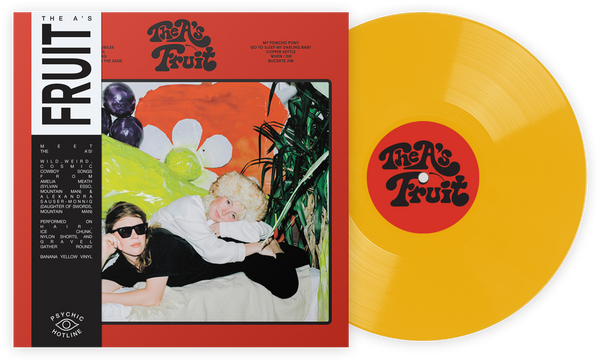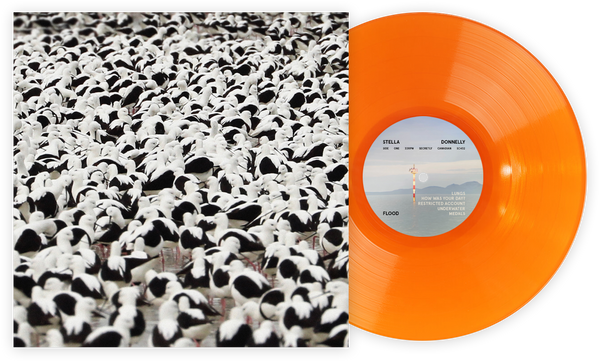Used record sales are soaring. Whilst the demand grows at a rapid pace, the supply is inevitably dwindling. Records are being found, cleaned and stored, sometimes never to be seen again. Safe and snug in its polythene sleeve, the record sits on a proud owner’s shelf. It has been taken from the wild and will never be yours. Consequently, great records in even better condition are demanding a premium. This is a sentiment that fills all collectors with dread. However, there is hope.
How often do we find a record we want, but with a sleeve in poor condition? The record itself is usually great, with the sleeve taking the brunt of the damage. Often we walk away, with tears in our eyes. How could someone be so careless? Truth be told, yesterday’s collectors are not to blame. Vinyl was never the precious commodity it is now. Think of how we have treated CD’s; that was yesterday’s vinyl.
To help numb future pain, here is a guide of how to best fix up the used and abused sleeves that await you. Hopefully, this guide will help you think twice before walking away from a sleeve that looks beyond repair, or help you turn that very good plus in to something excellent.
WHAT YOU NEED
Textured Kitchen Roll
Surface wipes (non-scented – unless you want lemon scented sleeves)
Razor Blade
File clip/s or heavy books
A knife
Blank cardboard sleeves
One eraser
CLEAR glue
Ok, so, this guide should help you with the key areas of sleeve repair. There will also be a focus on the different kinds of sleeves, and the limitations that face us with the varying kinds that we encounter. First things first.
Practice makes perfect.
Please, I beg of you, do not grab that $100 record that’s been upsetting you for the last two years and go straight to work. Repairing sleeves is nothing less than a fine art, and like all artists, you must first practice and hone your craft.
Repairing sleeves is a massive risk. Though we do these things with good intentions, there is always a risk you could actually make the sleeve worse. I can’t stress enough that this guide is a guide, and the repairs you choose to make are down to your own judgement. The more you practice, the higher chance you have of success. In time, you begin to develop a feel and a fairly accurate idea surrounding what can and cannot be repaired. This will save you time and heartache, as well as your hard earned cash. Pop down to your local thrift store and grab as many beat up, stickered, old and smelly records as you can. Then, with the help of this guide, get your technique down. Putting the time in is worth it, as there really is no better feeling than levelling up your sleeves.
So, without further delay:
Seam Splits
Seam splits are the worst. For all its beauty, the design of the vinyl record sleeve is a flawed one. The sharp, rounded black circle insides it make it the ultimate tool of self-destruction. Perfect sleeves that have remained undamaged through house moves and storage are becoming rarities, so we must make do with what we have whilst the hunt for perfection goes on.
To fix this, is both a delicate and arduous process. However, when completed, the satisfaction is immense. You’ll need to have a variety of plain cardboard sleeves, some glue and some flat, tight clips or some heavy books. A small knife with a right angled tip would also be great. You can grab these items on eBay. With the plain sleeves, try and have a variety of weights available as each record sleeve you try and repair will be weighted and shaped differently.
Firstly, you need to work out what kind of split you have, and how to best repair the kind of damage that has been done.

Clean Split
If it’s a nice clean split, you’re in luck. These are seriously easy to fix. These usually occur due to age and old glue that’s dried out.
STEP 1
Decide what glue to use. Stick glue is great if you’re new to this, as you can quickly rectify any error you make and the effects of the glue take a little longer to start working. It’s easy, it’s quick and it’s safe. Super glue is a one chance, one try business. If you do it right, your sleeve will be repaired for good. If you do it wrong, you’ll have a permanently damaged sleeve and a pint of self-loathing from the bar.
STEP 2
Run the glue along the top half of the seam split. If you’re using super glue, dab along with a Q Tip. You will learn very quickly (as I did) that if you glue the bottom half of the seam split, you will cause the excess glue to spill out in to the inside of the sleeve and you’ll glue it shut. Don’t do that.

STEP 3
Run your finger along the seam and push the sleeve down as you go. The glue should leak out of the top hinges. When this glue appears, take the small knife and run it quickly along the edge of the hinge. Do this swiftly and smoothly, being careful not to catch the sleeve.

STEP 4
This should leave the hinge of the record neat and tidy. Immediately after this, store the sleeve between two heavy weights or flat objects. This can be books, a stack, whatever. If it’s a small area of sleeve, use one of your shiny new clips to clamp it shut. After a short while, this should dry. Voila, one new looking sleeve.

Rough Split
Sleeves come in many forms, and this is a problem that you’ll encounter the most. Most sleeves are compiled by different parts, placed together upon assembly, whereas others can be made of one piece. Regardless of design, splits, tears and the eventual destruction of your record sleeve is inevitable. Time related wear and a lack of love are often the culprits to be held to account for this.

However, there is hope. Below is a technique that can rectify this.
STEP 1
Grab the spare sleeve and cut it to measure the length of the split. Make sure you pick a sleeve that’s a similar weight to the sleeve your fixing. If you’re serious about this, weigh the sleeves and use the one that is the most similar.
STEP 2
Measure the card and make sure it is around an inch longer than the area of sleeve that needs replacing. Then cut it to be around about 2.5 inches deep.

STEP 3
Take this card and fold it in half. With this card, you are effectively creating a replacement inner lining.
STEP 4
Using a Q Tip and super glue, dab the rougher outside of this segment of sleeve.

STEP 5
Insert the replacement inner and use it to bind together the split area of the record sleeve. Hold it as tight as you can until the super glue dries. You only have a few seconds to make sure it is positioned correctly, so make sure you’re sure! You’d be surprised once it dries how sturdy and structurally sound your new sleeve will be.

So, now you’ve got the replacement structure, you’re going to want to work on the cosmetic side of things. You’ll be left with a small area in which you can see the cardboard replacement and the slightly open sleeve. This next part is up to you. If you’re happy with the finish – leave the sleeve be. However, if you want to tighten things up:
Step 6
Grab a Q Tip and dab it in a little strong glue (stick glue will not do for this) and gently rub that along the open area of the sleeve. You can also pour glue right on to the replacement sleeve, provided you have a narrow tip and have done this before.

STEP 7
Once LIGHTLY applied, pinch shut the area of open sleeve. Any glue that spills over will need to be quickly wiped away, so have your surface wipe and kitchen roll ready and waiting. The kitchen roll will also be handy for your gluey fingers (which will need immediate wiping).
This technique requires speed and skill, so make sure you know what you’re doing before giving it a go. So long as you wipe away any excess without delay, you should be left with something that is far superior to what you had before.

Inner Split
This is possibly the most common damage you will find. I’m not entirely sure who thought the paper thin inner sleeve and a sharp rounded edge combination was a first-class idea, but they probably retired from product design a long time ago.
Luckily, this is a relatively easy fix. Due to the thinness of these sleeves, a quick repair is easily sourced.
STEP 1
Much like the outer sleeve, lightly apply superglue to the split with a Q Tip.

STEP 2
Run your fingers along the gap and quickly pinch it closed. Depending on the glue, this should dry very quickly and present as very well repaired.

STEP 3
Don’t forget your wipe and kitchen roll to sort your hands as quickly as possible.

This should work quickly and the repair to your inner will look great. It should also be noted that the same technique is effective for central and side seam splits. See images below.


A little tip for the future – grab yourself a load of poly lined inners. Remove your vinyl from the release inner sleeve and place it in the plain poly lined inner. The design of the inner is flawed, so by removing the record, you save your inner, stop sleeve rub occurring and live happily ever after.
General Cleaning
Due to age and poor storage, most record sleeves are dirty, smelly and messy. You’ll find nearly all pre owned records have some form of dirt related disorder. Don’t walk away, this is possibly the easiest thing to sort of all.
STEP 1
Grab your surface wipe and your kitchen roll. Working in select areas (top third, middle third and bottom third) of the sleeve, wipe away the dirt and dust.
STEP 2
Wipe first with the surface wipe, and then dry the area swiftly with the kitchen roll. The surface wipes are perfect for this kind of cleaning. General dirt and stains are exactly what they’re designed for. Make sure you are swift with the mopping up of the moisture. A wrinkled sleeve is the last thing you want.


If there is an area that’s proving very difficult to clean:
STEP 3
Try a little goo gone on some kitchen roll. This is a last resort, however, as it’s quite oily so must be used in a crisis. Remember, we must minimise the risk! Scrub the area with the Goo’d kitchen roll.
STEP 4
Quickly clean the oily area with the surface wipe, then dry with the kitchen roll. If done correctly, this should create a beautiful shine to your sleeve.

I recommend cleaning all sleeves - even ones that look clean. You’ll be stunned at how much dirt comes off. The upside to doing this now is minimising sleeve rub in the long run. Even in a polythene sleeve, dirt on a sleeve can cause friction and erosion, which will eventually decrease the life of your beloved record sleeves.
Hopefully, with these tips, you’ll add to and level up your record collection. Just remember, you’re walking a tightrope. When you reach the other side it’s a glorious thing, but for now – practice makes perfect and safety first!
Luke Pybus is a freelance writer and vinyl obsessive from Cardiff, Wales. Usually found shoulder deep in a box of records, or with a hot coffee writing about them.








